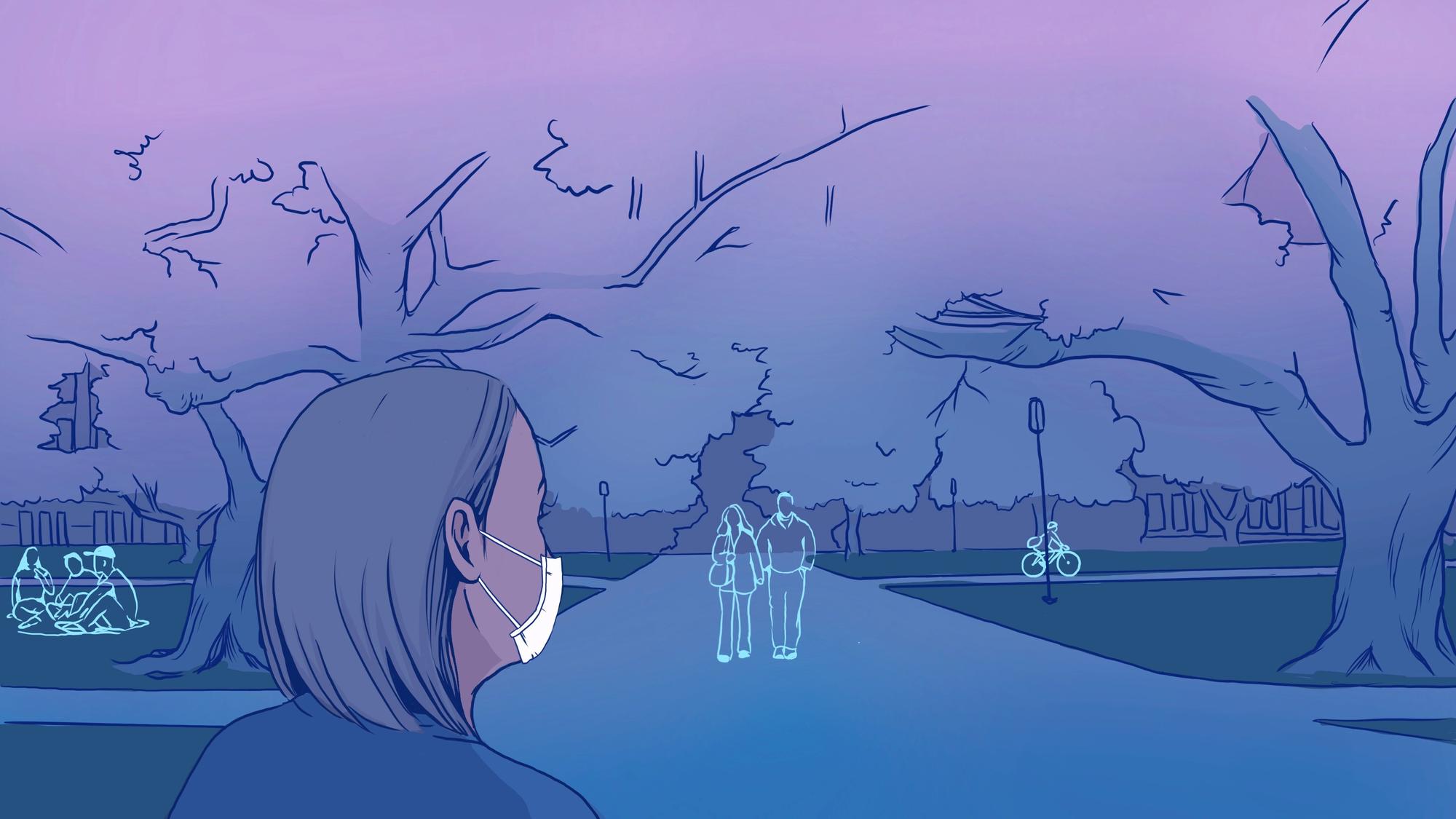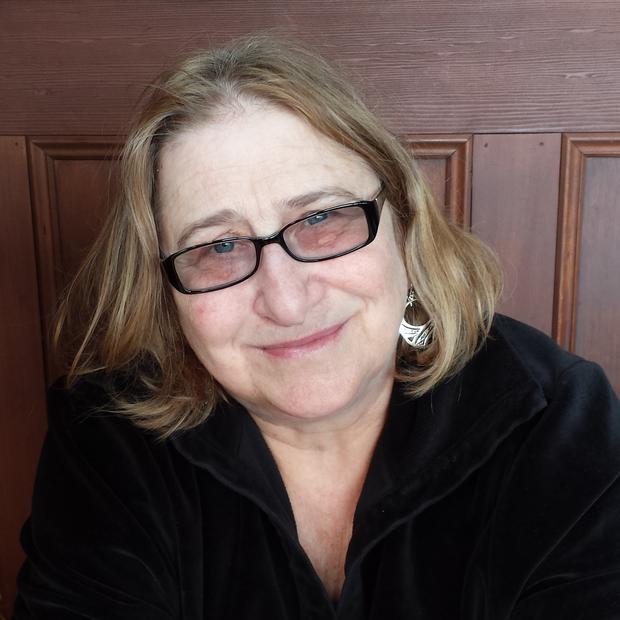As the coronavirus multiplies around and among us, ambling in the fresh air is one of the few pastimes sanctioned outside our homes. Battle shopping at local supermarkets? Necessary, but no fun. Defensive waiting in long drugstore lines for a prescription? Please, deliver me from that.
Hallelujah, for strolling! I love being able, even encouraged, to walk daily in the great outdoors, rain or shine, now that most fraternizing has been reduced to Facetime calls. I dwell in a beautiful city and a neighborhood (the U District/Ravenna) with many scenic places to saunter.
But in our current state of medical alert my jaunts ain’t what they used to be. Now my routes are planned carefully. Journeys on foot require vigilance, at times complex choreography. Most of all they demand heightened sensory and spatial awareness — dynamics that change the way I perceive others when we’re all out and about, together but separate.
The French (of course) have a great term for someone who wanders at whim: a flaneur, meaning a stroller, a lingerer, a dawdler. No more flaneuring for me these days. No more impulsive window shopping, or dropping by bookstores or the library or Scarecrow Video to browse on a whim. No more spontaneous lunch invitations to meet for a pancake brunch at Portage Bay Café or blueberry waffles at the Sunlight Café.
Now I’m only taking routes with the least amount of foot traffic and the best odds of avoiding, well, anyone up close.
A side effect: My no longer carefree walks are fueling a rising level of distrust. I can’t always believe what friends tell me about which parks or paths are uncrowded or even open to the public. Nobody is trying to endanger me, but the situation is (as government officials keep telling us) “fluid.”
Last weekend, a friend said she had been enjoying the annual blossoming of cherry trees on the University of Washington campus. But doesn’t a big crowd always turn out for the spectacle? Not this year, she said. Hearing that, and craving that rush of floral ecstasy, my husband and I rambled over to the campus quad where the mature cherry trees are canopied in cloudlike clusters of pink petals. It was a glorious sight, but we were far from alone.
True, there wasn’t the customary horde of gawkers gazing upward in wonder, eating picnics, taking selfies, climbing up trunks. But there were dozens — including families with children thrilled to be out of the house and scampering freely. Suddenly, a springtime ritual I’ve loved for years put me on high alert. We found a deserted spot, snapped a single photo and strode away briskly, watchfully staying clear of everyone we passed. Later I learned the UW had begun begging people not to visit in person, but instead to view the blossoms via webcam.
The experience got me recalling more extreme recommendations from friends — those times when a companion extolled the thrill of skydiving or proselytized about trekking in the high Himalayas. Whether it’s climbing peaks or gazing at a floral spectacle, each of us has our own idea of risk and an individual sense of exceptionalism or invulnerability. Gov. Jay Inslee’s urgent bulletins to avoid social contact just don’t land the same way for all people.
For my spooked sister-in-law in California, who has underlying medical conditions, her response is to wear gloves, a face mask and a hard hat (to help her avoid touching her face — she swears it works) on the increasingly rare occasions she visits her small-town grocery. Others I know believe that if you just don’t touch strangers or embrace friends at social gatherings (yes they still happen), you’ll stay healthy.
For me, the circle I’m drawing around my germ-free comfort zone is getting smaller and smaller. And as the new “COVID-19 lifestyle” sets in for perhaps the long haul, I can’t make assumptions about how risk averse others are. Including fellow strollers.
“Don’t trust anyone over 30!” The phrase reportedly coined in the 1960s by political activist Jake Weinberg was a popular creed of my baby boomer generation. But given that so many young adults have been flouting social distancing rules, it’s hard not to heed the opposite: “Don’t trust anyone under 30!”
Lately I’m leery about wandering near UW’s fraternity row and other campus housing on my neighborhood excursions. It’s not because of the occasional drunken jock parties, which used to vex me, but the clusters of students hanging out and sunbathing together as if they hadn’t a care in the world.
I’ve become hyperalert to age brackets. I give young families out with children a wide berth. And if teens or young adults head toward me on the same block, I don’t trust them to make the first move. Instead, I’ll quickly sidle over to the curb. Or if there’s no traffic, I’ll just walk down the middle of the street — which seems safer than the sidewalk.
Despite the fact that (as Inslee bluntly stated) “You might kill Grandpa” if you’re a symptom-free virus carrier, I’ve observed a lot of young folk not staying anywhere near 6 feet apart — or 2 or 3, for that matter. Is it immaturity? Bravado? The extreme breed of individualism that leads even some in high office to ignore scientific fact and the potential suffering of others?
Most kids aren’t malevolent — some are just thoughtless. And many others are conscientious. I really don’t want to contribute to a generation gap that gapes even wider after this pandemic subsides. From now on, we’re going to need each other more than ever. It’s better if all of us simply practice defensive walking or, if you want to think of it the way the Buddhists do, “mindful” walking.
For all this new trepidation and caution, I still gain so much from these short jaunts — and not just physically. The Japanese have long praised the mental health benefits of “forest bathing,” and just as a stroll among trees in Ravenna Park fills my lungs with fresh oxygen, it also fills my heart with light. I see microgifts of shared humanity, too, in a time when our interactions are so limited (and potentially dangerous).
More strangers standing on their porches give me a wave as I pass. People sometimes shout greetings and encouraging words from the opposite side of the street. My neighbors patiently take turns petting Mittens, the voluptuously lazy neighborhood cat sprawled on the corner. There’s less jarring noise outside. Fewer cars are racing somewhere. We seem to get more daily evidence that life, minute by minute and wave by wave, is precious.
In my best moments I want to believe what Vietnamese writer and Zen monk Thich Nhat Hanh says about putting one foot in front of another. “When you walk reverently and solidly on this earth and I do the same, we send out waves of compassion and peace,” he writes. “It is this compassion that will heal ourselves, each other, and this beautiful green earth.”



